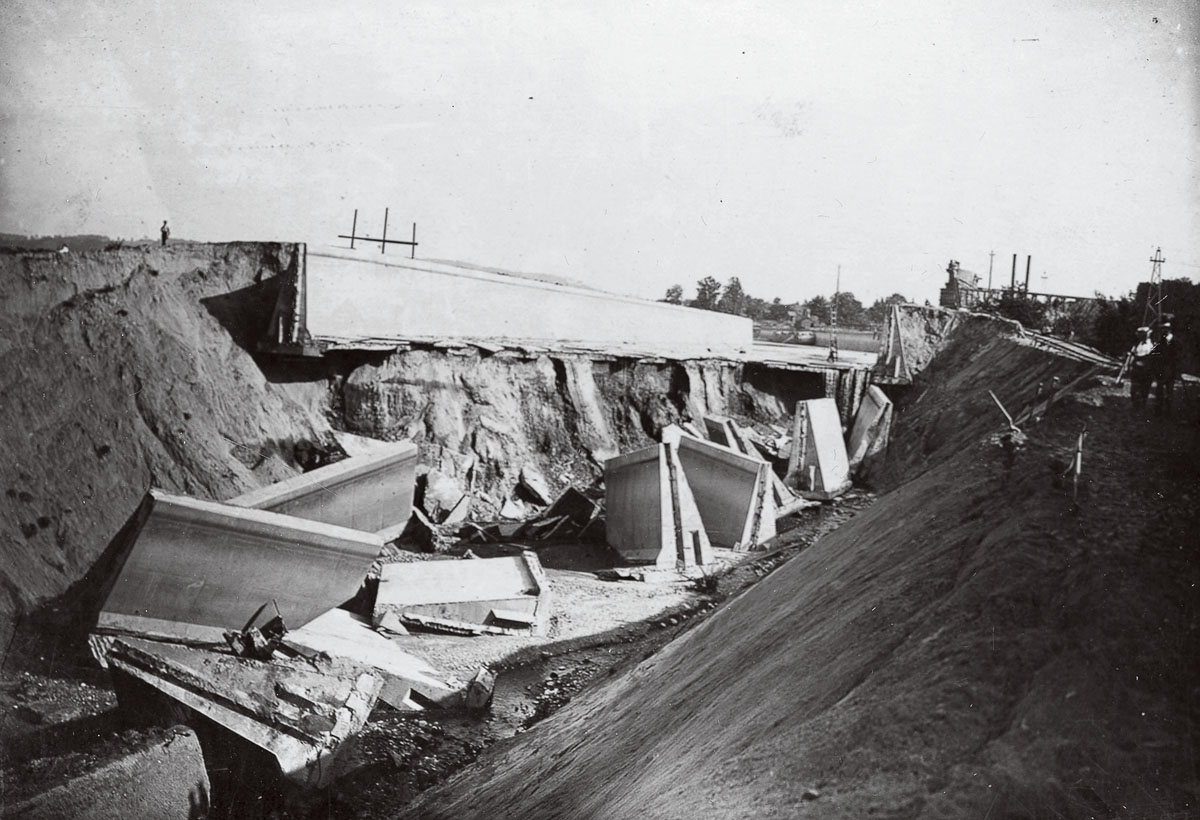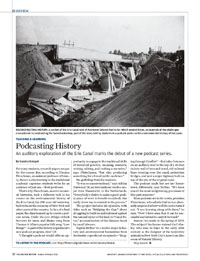In Review
 RECONSTRUCTING HISTORY: A section of the Erie Canal east of Rochester (above) had to be rebuilt several times, an example
of the challenges encountered in constructing the famed waterway, part of the story told by students in a podcast series on
the environmental history of the canal. (Photo: University Libraries/Department of Rare Books, Special Collections, and Preservation)
RECONSTRUCTING HISTORY: A section of the Erie Canal east of Rochester (above) had to be rebuilt several times, an example
of the challenges encountered in constructing the famed waterway, part of the story told by students in a podcast series on
the environmental history of the canal. (Photo: University Libraries/Department of Rare Books, Special Collections, and Preservation)For many students, research papers are par for the course. But, according to Thomas Fleischman, an assistant professor of history, there’s a shortcoming to the traditional academic capstone: students write for an audience of just one—their professor.
Hear This
That’s why Fleischman, an environmental historian, took a different tack in his course on the environmental history of the Erie Canal, the 200-year-old waterway built to boost the economy of New York and other parts of the country. In lieu of a final paper, the class teamed up to create a podcast series. Under the Low Bridge—which borrows its name and theme song from Thomas S. Allen’s popular folk song “Low Bridge”—is part of the history department’s new podcast program, Hear UR.
“I thought a podcast would offer an opportunity to engage in the traditional skills of historical practice, meaning, research, writing, editing, and crafting a narrative,” says Fleischman, “but also producing something for a broad public audience.”
No quibbling from his students.
“It was so unconventional,” says Adrian Harwood ’18, an international studies major from Maastricht, in the Netherlands. “Everybody’s desire to make a good quality piece of work to benefit everybody else really drove me to commit to the process.”
The project includes six episodes, with titles such as “Bridging the Gap,” about struggling to build an embankment against the natural layout of the land, to “Canal Fever,” an examination of the diseases faced by canal laborers.
Sophia McRae ’19, a double major in history and environmental humanities from Rochester, coproduced an episode—“Barging through Conflict”—that takes listeners on an auditory tour to the top of a 30-foot rickety wall of iron and wood, old railroad lines crossing over the canal, pedestrian bridges, and now a major highway built on top of the site of the original canal.
The podcast made her see her hometown differently, says McRae. “It’s been one of the most enlightening processes of this past semester.”
More podcasts are in the works, promises Fleischman, who admits that he was pleasantly surprised at how well the series turned out. “I was learning along with them,” he says. “Now I have seen that it can be successful and intend to carry it forward.”
Season two starts in the spring of 2019. The subject? Rochester-trained Carl Akeley, who rose to fame in the early 20th century as the designer of the taxidermy animals in New York City’s American Museum of Natural History.
Stay tuned.

